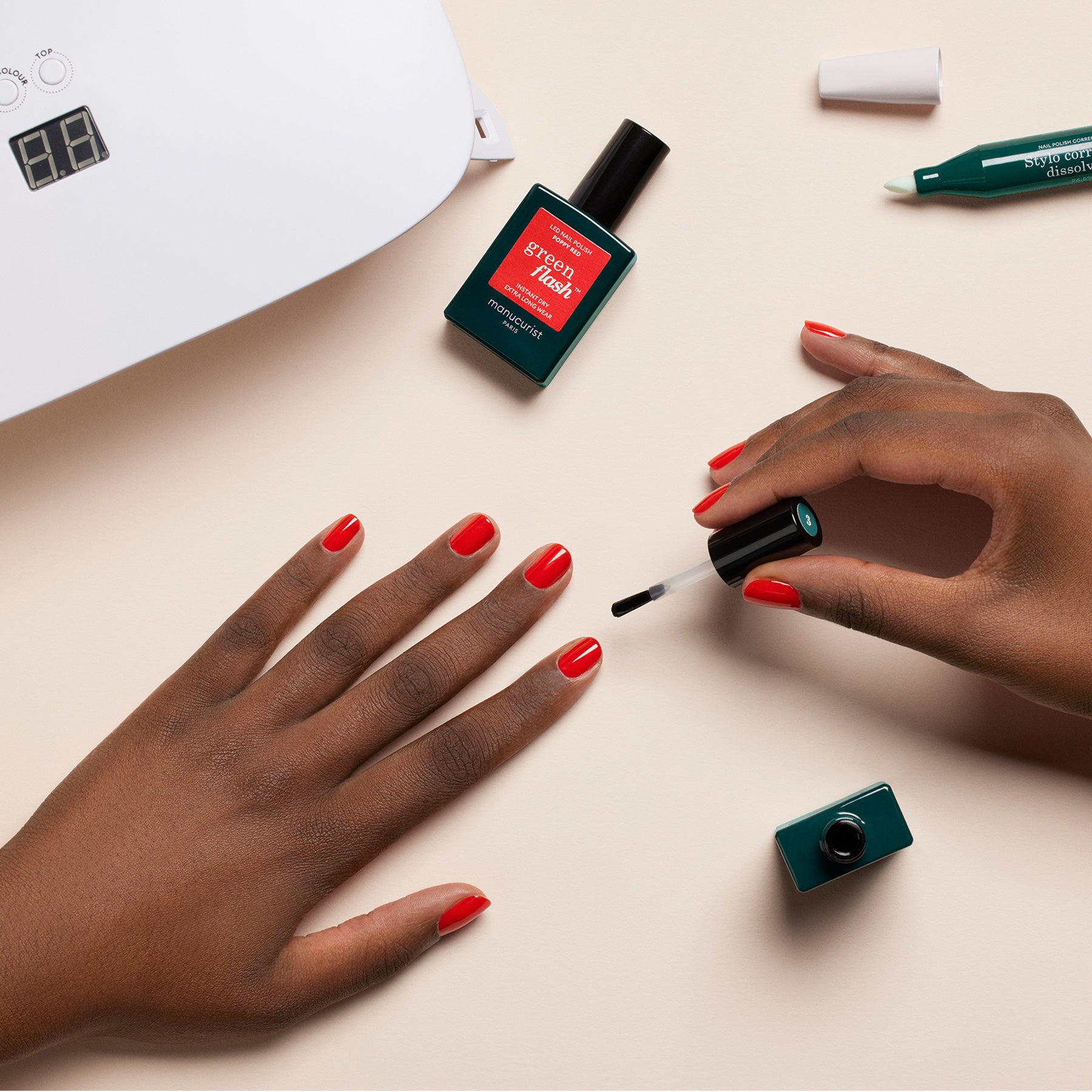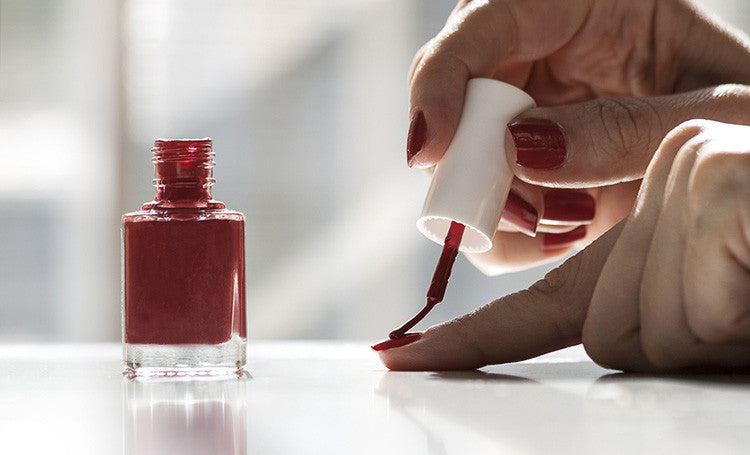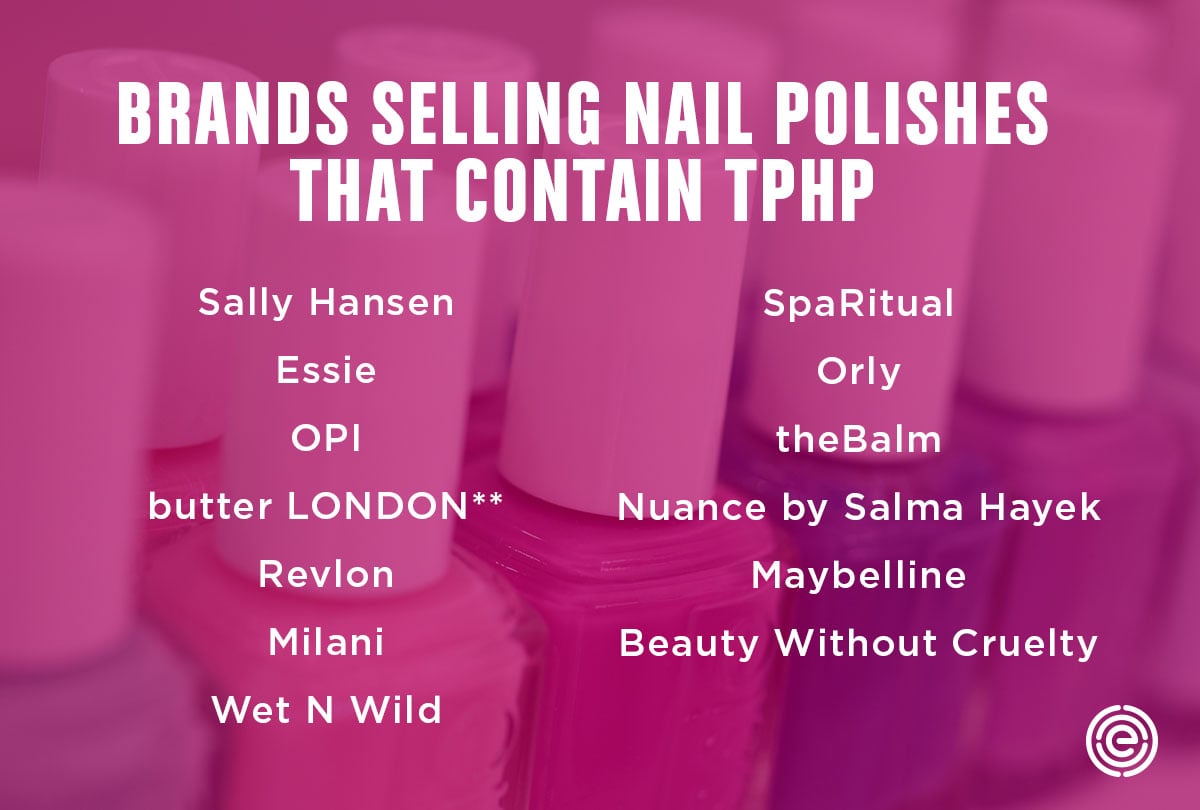Introduction

Nail polish has become a popular beauty product, widely used for its ability to enhance the appearance of nails. However, concerns have been raised about the safety of nail polish ingredients and their potential impact on human health. It is important to investigate the toxicity levels of these ingredients and understand the potential health risks associated with their use. This article aims to provide an overview of nail polish ingredients, discuss the research on their toxicity levels, examine their impact on human health, and offer safer alternatives and precautions for those concerned about the potential risks. It is essential to make informed choices for personal health and wellbeing when it comes to nail polish usage.
Overview Of Nail Polish And Its Popularity
Nail polish has gained immense popularity as a cosmetic product used for enhancing the appearance of nails. It is widely used by individuals of all genders and age groups, making it a staple in the beauty industry. Nail polish comes in a variety of colors and finishes, allowing people to express their personal style and creativity. With its ability to transform plain nails into vibrant and eye-catching works of art, nail polish has become a fashion statement and a form of self-expression. Its widespread use can be attributed to its accessibility, affordability, and the endless possibilities it offers for nail designs.
Importance Of Investigating The Safety Of Nail Polish Ingredients
Investigating the safety of nail polish ingredients is of utmost importance for several reasons. Firstly, it allows consumers to make informed choices about the products they use on their nails, ensuring their personal health and wellbeing. Secondly, it helps identify potential health risks associated with certain ingredients, such as respiratory problems or hormonal imbalances. Thirdly, it encourages the development of safer alternatives in the beauty industry, promoting the use of non-toxic and eco-friendly nail polish options. By understanding the potential dangers and making educated decisions, individuals can protect themselves from harmful effects and maintain healthier nails.
Understanding Nail Polish Ingredients

Nail polish is composed of various ingredients that give it its color, texture, and longevity. Common ingredients found in nail polish include solvents, resins, plasticizers, pigments, and film-forming agents. These ingredients work together to create a smooth and durable finish on the nails. However, it is important to note that some of these ingredients have been associated with potential health risks. For example, toluene, a solvent commonly found in nail polish, has been linked to eye irritation and nervous system damage. By understanding the ingredients in nail polish, individuals can make informed choices and opt for safer alternatives.
Common Ingredients Found In Nail Polish
Nail polish is composed of various ingredients that give it its color, texture, and longevity. Some of the common ingredients found in nail polish include:
- Solvents: These are liquids that help dissolve other ingredients and give nail polish its liquid form. Common solvents include ethyl acetate, butyl acetate, and isopropyl alcohol.
- Resins: Resins help create a durable and adhesive finish on the nails. Examples of resins used in nail polish include formaldehyde resin, tosylamide/formaldehyde resin, and camphor.
- Plasticizers: These ingredients help make the nail polish flexible and less brittle. Popular plasticizers used in nail polish include dibutyl phthalate (DBP), triphenyl phosphate (TPP), and camphor.
- Pigments: Pigments provide nail polish with its color. They can be synthetic or derived from natural sources. Some pigments commonly used in nail polish include iron oxides, titanium dioxide, and mica.
- Film-forming agents: These ingredients help create a smooth and even film on the nails. Examples of film-forming agents used in nail polish include nitrocellulose, cellulose acetate butyrate, and acrylates.
It is important to note that different brands and formulations may vary in the specific ingredients used. Always read the ingredient labels and choose nail polishes that prioritize safety and minimize the use of potentially harmful chemicals.
Potential Health Risks Associated With Certain Ingredients
Certain ingredients commonly found in nail polish have been linked to potential health risks. For instance, dibutyl phthalate (DBP) has been associated with nausea and irritation of the eyes, skin, nose, mouth, and throat. Formaldehyde, another common ingredient, has been classified as a known human carcinogen by the International Agency for Research on Cancer (IARC). Toluene, yet another ingredient, has been linked to reproductive and developmental toxicity, as well as respiratory and neurological effects. These health risks highlight the importance of being aware of the ingredients in nail polish and making informed choices for personal health and wellbeing.
Investigating Toxicity Levels

Research on the toxicity levels of nail polish ingredients has been conducted to evaluate their potential impacts on human health. Studies have examined the concentration of harmful chemicals such as toluene, dibutyl phthalate (DBP), and formaldehyde in various nail polish brands. Findings have raised concerns about the presence of these substances and their potential effects on the body. It is important to consider the toxicity levels of nail polish ingredients when making choices for personal health and wellbeing. Awareness of these findings can help individuals make informed decisions and opt for safer alternatives.
Research On The Toxicity Levels Of Nail Polish Ingredients
Research has been conducted to evaluate the toxicity levels of nail polish ingredients and their potential impact on human health. Studies have specifically examined the concentration of harmful chemicals such as formaldehyde, toluene, and dibutyl phthalate (DBP) in various nail polish brands. The findings have raised concerns about the presence of these substances and their potential effects on the body. It is important for individuals to be aware of these research findings in order to make informed choices about the nail polish they use, opting for safer alternatives when possible.
Studies And Findings On The Potential Health Effects
Several studies have investigated the potential health effects of nail polish ingredients and have yielded concerning findings. Research has shown that chemicals found in nail polish can be absorbed through the nails and skin, leading to potential adverse effects on the body. For example, formaldehyde has been linked to respiratory irritation and allergic reactions. Toluene has been associated with neurological and developmental issues. Dibutyl phthalate (DBP) has been linked to hormone disruption and reproductive problems. These findings emphasize the importance of understanding the potential risks associated with nail polish and the need for safer alternatives.
The Impact On Human Health

The use of nail polish and its ingredients can have various impacts on human health. Firstly, certain chemicals found in nail polish, such as formaldehyde and toluene, have been linked to respiratory irritation and allergic reactions when inhaled or absorbed through the skin. Additionally, substances like dibutyl phthalate (DBP) have been associated with hormone disruption and reproductive problems. These potential health risks emphasize the importance of understanding the ingredients in nail polish and the need for safer alternatives. Taking precautions and using eco-friendly, non-toxic nail polish options can help minimize the potential negative impact on human health.
Potential Risks To The Respiratory System And Skin
Chemicals found in nail polish, such as formaldehyde and toluene, can pose potential risks to the respiratory system and skin. When inhaled or absorbed through the skin, these chemicals can cause respiratory irritation and allergic reactions. Formaldehyde is known to be a strong respiratory sensitizer, while toluene can irritate the eyes, nose, and throat. Additionally, some individuals may be more susceptible to these effects, such as nail salon workers who have prolonged exposure to these chemicals. Therefore, it is important to be aware of these potential risks and take precautions to minimize exposure.
Possible Effects On Hormone Balance And Reproductive Health
Some studies suggest that certain ingredients in nail polish, such as dibutyl phthalate (DBP) and toluene, may have a potential impact on hormone balance and reproductive health. These chemicals are classified as endocrine disruptors, which means they can interfere with the body’s hormonal system. While the levels of these chemicals in nail polish are generally low, long-term and repeated exposure to them may pose a risk. It is important to note that more research is needed to fully understand the effects of nail polish on hormone balance and reproductive health.
Safer Alternatives And Precautions

When it comes to nail polish, there are safer alternatives available that can minimize potential health risks. Look for eco-friendly and non-toxic nail polish options that are free from harmful chemicals such as formaldehyde, toluene, and dibutyl phthalate (DBP). These products are often labeled as “3-free” or “5-free” to indicate the absence of certain toxic ingredients. Additionally, practicing safe application is important. Ensure there is proper ventilation when applying nail polish, and avoid prolonged exposure to the fumes. It is also recommended to use nail polish removers that are acetone-free. By taking these precautions, you can enjoy beautifully manicured nails while reducing potential health risks.
Eco-friendly And Non-toxic Nail Polish Options
There are eco-friendly and non-toxic nail polish options available that prioritize both safety and sustainability. Look for nail polishes that are labeled as “3-free” or “5-free,” indicating that they are free from harmful chemicals such as formaldehyde, toluene, and dibutyl phthalate (DBP). These polishes are often made with natural, plant-based ingredients that are less likely to cause adverse health effects. Additionally, consider brands that use sustainable packaging and manufacturing practices to reduce their environmental impact. By opting for these eco-friendly alternatives, you can enjoy beautiful nails while minimizing potential health risks and supporting a greener beauty industry.
Tips For Minimizing Exposure And Practicing Safe Application
To minimize exposure to potentially harmful ingredients in nail polish, here are some tips for safe application:
- Choose eco-friendly and non-toxic nail polish options labeled as “3-free” or “5-free,” which are free from chemicals like formaldehyde, toluene, and dibutyl phthalate (DBP).
- Opt for water-based nail polishes instead of solvent-based ones, as they tend to have fewer toxic ingredients.
- Apply nail polish in a well-ventilated area to reduce inhaling fumes.
- Consider wearing gloves while applying nail polish to minimize skin contact with the chemicals.
- Avoid biting or peeling off nail polish, as it can lead to ingestion of harmful ingredients.
- Use nail polish removers that are acetone-free and less toxic.
- Take breaks between manicures to allow your nails to breathe and recover.
By following these tips, you can enjoy your nail polish while reducing the potential health risks associated with its application.
Conclusion

In conclusion, the safety of nail polish ingredients is an important concern due to the potential health risks associated with certain chemicals. While there is ongoing research on the toxicity levels of these ingredients, it is prudent to exercise caution and minimize exposure. Choosing eco-friendly and non-toxic nail polish options, practicing safe application techniques, and taking breaks between manicures can help reduce the potential health risks. Making informed choices about nail polish products is crucial for protecting personal health and well-being. It is advisable to stay updated on the latest research and guidelines in order to make educated decisions about nail polish usage.
Summary Of Findings On The Safety Of Nail Polish Ingredients
The safety of nail polish ingredients is an important concern due to the potential health risks associated with certain chemicals. While research on the toxicity levels of these ingredients is ongoing, it is prudent to exercise caution and minimize exposure. Choosing eco-friendly and non-toxic nail polish options, practicing safe application techniques, and taking breaks between manicures can help reduce the potential health risks. Making informed choices about nail polish products is crucial for protecting personal health and well-being. Staying updated on the latest research and guidelines is advisable for educated decision-making about nail polish usage.
Importance Of Making Informed Choices For Personal Health And Wellbeing
Making informed choices about nail polish products is crucial for protecting personal health and wellbeing. With the potential health risks associated with certain nail polish ingredients, individuals should be aware of the potential hazards and make conscious decisions about the products they use. By staying updated on the latest research and guidelines, individuals can make educated decisions about nail polish usage, opting for safer alternatives and taking precautions to minimize exposure. Prioritizing personal health and wellbeing through informed choices can contribute to maintaining overall wellness and reducing the potential risks associated with nail polish.
Frequently Asked Questions: Will Nail Polish Remover Remove Paint?
Q: Can I use nail polish remover to remove paint from surfaces?
A: Nail polish remover can sometimes be effective in removing paint, but it largely depends on the surface and type of paint involved.
Q: Does nail polish remover work on all types of paint?
A: Nail polish remover works best on enamel or oil-based paint. It may not be as effective on water-based or acrylic paint.
Q: What surfaces can I use nail polish remover on to remove paint?
A: Nail polish remover can be used on hard, non-porous surfaces like glass, ceramic, metal, or plastic. It may not be suitable for use on delicate or porous surfaces like wood or fabric.
Q: How do I use nail polish remover to remove paint?
A: To use nail polish remover, apply a small amount to a clean, lint-free cloth or cotton ball. Gently rub the painted area until the paint starts to dissolve. It may take some time and effort to completely remove the paint.
Q: Are there any precautions I should take when using nail polish remover?
A: Yes, it is important to test the nail polish remover in a small, inconspicuous area first to ensure it does not damage or discolor the surface. Additionally, nail polish remover contains strong chemicals, so it is advisable to work in a well-ventilated area and avoid prolonged skin contact.
Q: What should I do if nail polish remover does not remove the paint?
A: If nail polish remover does not work, you may need to try other paint removal methods or consult a professional for assistance. It is important to choose a suitable method based on the type of paint and surface involved.
Q: Can nail polish remover damage the surface?
A: Nail polish remover can potentially damage certain surfaces, especially delicate ones. Therefore, it is crucial to test it in a discreet area and follow any manufacturer guidelines or recommendations before attempting to remove paint.
Q: Are there any alternatives to nail polish remover for paint removal?
A: Yes, there are various alternatives to consider, including paint strippers, denatured alcohol, or commercial paint removers. However, using these alternatives also requires caution and can vary in effectiveness depending on the situation.
Remember that removing paint from surfaces can be a delicate process, and it is always best to refer to specific product instructions or seek professional advice when in doubt.

I am proud to offer non-toxic beauty options. The gel polishes I offer are “9-Free”, free of nine of the most commonly found allergens and toxic chemicals in nail polish, and cruelty-free, vegan, and HEMA-free. The nail lacquers I offer range between “7-Free” and “16+-Free” and are also cruelty-free and vegan.